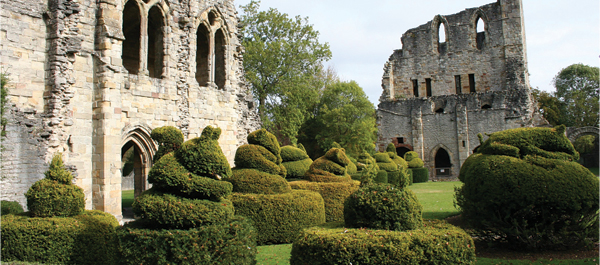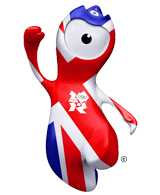
By Dana Huntley
Much Wenlock shares its essential characteristics with scores of small market towns scattered across the English landscape
In just a few short months, more than 16,000 athletes from around the world will gather in London for the 2012 Olympic Games. In time-honored tradition since the first modern Olympics in 1896, the games will open with gala ceremony. In colorful costume, athletes will parade by nation into the new Olympic Stadium in Stratford, East London, where the Olympic village and competition sites have been under construction for years.
In the excitement of the Olympic opening ceremony, few will spare a thought that the traditions of the modern Olympics and the parade of athletes itself were born in a small market town in Shropshire—except maybe the Olympic mascot, Wenlock (the baneful little creature pictured above), named to commemorate the Olympics’ roots in quiet Much Wenlock.
Much Wenlock shares its essential characteristics with scores of small market towns scattered across the English landscape. This particular town of some 3,000 souls is perched on the end of Wenlock Edge, a picture-postcard escarpment of hills running a dozen miles to the southwest toward the Welsh border. To the north lies the modern industrial town of Telford, and the historic River Severn valley of Ironbridge Gorge—the birthplace of the Industrial Revolution.
The streets of Much Wenlock are much quieter than Telford’s, however, and their very narrowness bespeaks an origin long before the advent of modern transportation. In fact, most of the town’s principal streets are Victorian or earlier—sometimes much earlier. Like many medieval English towns, Much Wenlock grew up in the literal and commercial shadow of Wenlock Priory. Like most medieval religious foundations, the rich Cluniac priory itself received its death knell from Henry VIII, but the town lived on.
 Until the coming of the railroad, let alone the automobile, small rural towns like Much Wenlock were relatively isolated from the big world beyond, including London, which would have seemed a world away. In that isolated world of the mid-1800s, the Much Wenlock town doctor was a forward-thinking, enterprising young man, who returned home from a medical education on the Continent to assume the practice of his father. Dr. William Penny Brookes subsequently went on to be one of the prime movers-and-shakers in Much Wenlock for more than 50 years.
Until the coming of the railroad, let alone the automobile, small rural towns like Much Wenlock were relatively isolated from the big world beyond, including London, which would have seemed a world away. In that isolated world of the mid-1800s, the Much Wenlock town doctor was a forward-thinking, enterprising young man, who returned home from a medical education on the Continent to assume the practice of his father. Dr. William Penny Brookes subsequently went on to be one of the prime movers-and-shakers in Much Wenlock for more than 50 years.
In 1841, the young doctor was made justice of the peace and shortly after, commissioner for roads and taxes. That year also, Brookes founded the Agricultural Reading Society, in essence a lending library with adult education classes. Out of that organization Brooke formed the Wenlock Olympian Class in 1850 to hold annual Games “to promote the moral, physical and intellectual improvement of the inhabitants.”
The first Wenlock Olympian Games were held in October 1850, with classic track-and-field events as well as “country sports” such as football, cricket and quoits. The games contested have varied and evolved over the years, but the Wenlock Olympian Games have remained; they are still held annually the second week of July in and around Much Wenlock and draw several thousand athletes of all ages from across Britain.
[continued on next page]
